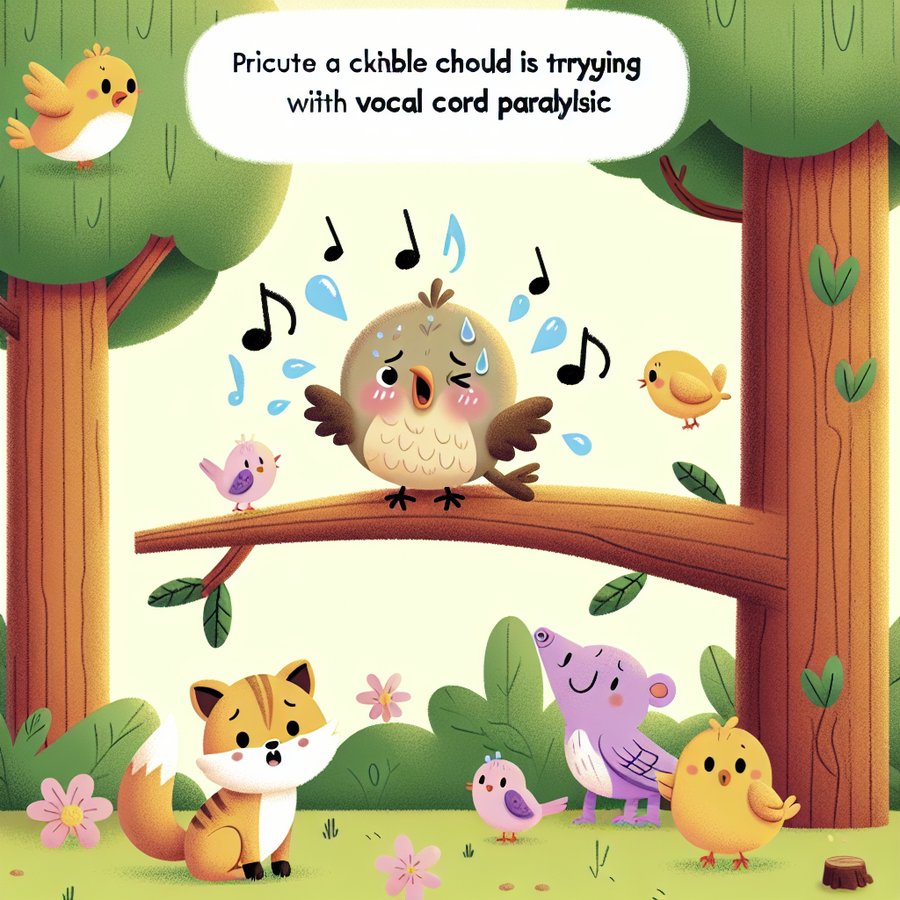Vocal cord paralysis is a condition that can occur in individuals of any age, including infants. This condition emerges when one or both vocal cords cannot move properly, which can significantly impact a baby’s ability to cry, breathe, and eventually speak. Understanding the intricacies of this condition, from its causes to its management, is crucial for any parent or caregiver. In this comprehensive guide, we delve deep into the subject of vocal cord paralysis in babies, offering valuable insights and support for new parents.
What is Vocal Cord Paralysis?
Vocal cord paralysis refers to the condition where one or both of the vocal cords cannot move. In babies, this can lead to difficulties with breathing, feeding, and making sounds. The vocal cords, situated in the larynx or voice box at the top of the windpipe, play a pivotal role in managing airflow during breathing and producing sounds. When these cords are paralyzed, their motion is restricted, which can interfere with these essential functions.
The condition can be classified into unilateral or bilateral paralysis, depending on whether one or both vocal cords are affected. Unilateral vocal cord paralysis is more common and typically results in a breathy or weak cry and potential breathing difficulties. Bilateral vocal cord paralysis, although less common, is more severe and can lead to significant breathing challenges, necessitating prompt medical attention.
What Causes Vocal Cord Paralysis in Babies?
The causes of vocal cord paralysis in babies can be diverse, ranging from congenital conditions to injury or infection. Congenital vocal cord paralysis, where the condition is present at birth, might result from developmental issues during pregnancy or from a complex birth. Other causes include nerve damage from surgery, infections that affect the brain or nervous system, and neurological conditions like cerebral palsy.
In some cases, the exact cause of vocal cord paralysis might not be identifiable. This idiopathic vocal cord paralysis poses challenges for treatment and management but with careful observation and supportive therapies, babies can lead a healthy life.
Recognizing the Symptoms of Vocal Cord Paralysis
Identifying vocal cord paralysis in babies can be challenging, as the symptoms can vary and may be similar to other conditions. The most common sign is a change in the cry of the baby; it might become weak, breathy, or absent. Other symptoms include difficulties in swallowing and feeding, which can lead to poor weight gain and frequent choking or coughing during feeds. Respiratory issues, such as stridor (a high-pitched wheezing sound during breathing), are also indicative of possible vocal cord paralysis.
Babies with bilateral vocal cord paralysis may exhibit more severe symptoms, including significant breathing difficulties and cyanosis (a bluish discoloration of the skin due to lack of oxygen). Any parent noticing these symptoms in their child should seek medical evaluation promptly.
How is Vocal Cord Paralysis Diagnosed and Treated?
Diagnosing vocal cord paralysis involves a thorough evaluation by a pediatrician or an otolaryngologist (ear, nose, and throat specialist). The diagnosis typically includes a physical examination, a review of the baby’s medical history, and special tests like laryngoscopy or bronchoscopy, where a small camera is used to view the vocal cords directly. Advanced imaging techniques such as MRI or CT scans may also be employed to assess the extent of paralysis and to identify potential causes.
Treatment for vocal cord paralysis depends on the severity of the condition and its underlying causes. For some babies, the condition may resolve on its own over time. However, others might require interventions such as speech therapy to help with feeding and communication skills, or surgical procedures to improve airway safety and voice quality. In cases of bilateral vocal cord paralysis, tracheostomy (creating an opening in the neck to the windpipe) might be necessary to ensure adequate breathing.
Living with Vocal Cord Paralysis: Tips for Parents
Managing a baby with vocal cord paralysis can be daunting for parents, but with the right support and information, it is entirely possible to navigate this challenge successfully. Prioritizing the baby’s breathing and feeding needs is crucial. Parents may need to adapt feeding techniques, such as using special nipples or feeding positions, to ensure that the baby receives adequate nutrition without choking risks. Continuous monitoring for respiratory difficulties is also essential, with immediate action taken if breathing issues worsen.
Engaging with a multidisciplinary team of healthcare professionals, including pediatricians, otolaryngologists, speech therapists, and nutritionists, can provide a comprehensive support system for the baby and family. Additionally, connecting with other families going through similar experiences through support groups can offer invaluable emotional support and practical advice.
Vocal cord paralysis in babies presents a complex array of challenges, but with careful management and the support of a skilled healthcare team, babies can grow up to lead healthy, fulfilling lives. For parents navigating this condition, remember, knowledge is power. By understanding the condition, its implications, and the available treatment options, you can advocate effectively for your child’s health and well-being.
For more detailed information and support on related topics, you might find these links helpful: Understanding Baby Apnea, Managing Acid Reflux in Babies, and Auditory Processing Disorder in Children.













